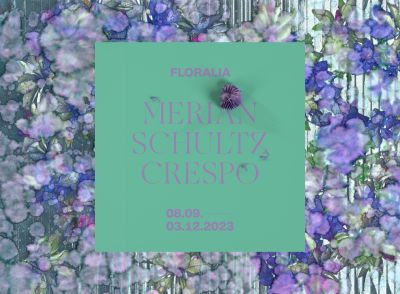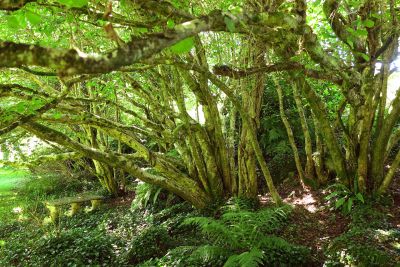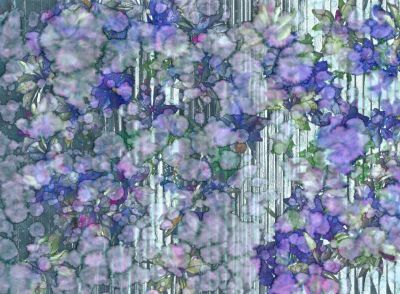FLORALIA: MERIAN – SCHULTZ – CRESPO
EXHIBITION PRESENTING ULRIKE CRESPO’S ‘RAINFLOWERS’ IN SENCKENBERG NATURMUSEUM
Three major Frankfurt artists, and three different eras: Senckenberg Naturmuseum Frankfurt presents an impressive exhibition showcasing portraits of plants by three women who all had a masterly artistic and scientific command of natural exploration.

Plants between art and exploration
Maria Sibylla Merian (1647–1717), Elisabeth Schultz (1817–1898) and Ulrike Crespo (1950–2019): these three female artists from Frankfurt not only represent three successive centuries of observing the world of plants but also brilliantly combine the viewpoints of the artist and the researcher.
Works from the Baroque era, post-industrialisation and post-modernism
But the exhibition has so much more to say than just that. It places the works in a new context, presenting the artists’ modes of seeing and investigative interests in order to illuminate the relationships between nature, science and art through the ages.
Art and nature, Frankfurt and female perspectives
The ‘Floralia’ exhibition is the result of a partnership between the Crespo Foundation and Senckenberg Naturmuseum. The museum is a key scholarly partner in the foundation’s Glenkeen Garden Residencies artists-in-residence programme, which takes ‘ArtNature/NatureArt’ as its motto. The artists Christiana Cheiranagnostaki and Konstanza Kapsali present their poetic documentary film about Glenkeen Garden in the exhibition, which was the product of their own residency.
The drawings, paintings, prints and experimental photographs can be seen at Senckenberg Naturmuseum from 8 Sept. to 3 Dec. 2023.

Excerpt from the film Glenkeen Garden by Christiana Cheiranagnostaki and Konstanza Kapsali, 2023
‘Their works express a curiosity, an urge to discover things, and a patient attention to detail in natural spaces and when observing correlations.’
‘Their works express a curiosity, an urge to discover things, and a patient attention to detail in natural spaces and when observing correlations.’
‘Not only the artists are women. Thanks to Dr. Brigitte Franzen and Dr. Ellen Wagner, the museum’s director and the exhibition’s curator are also female.’
‘Not only the artists are women. Thanks to Dr. Brigitte Franzen and Dr. Ellen Wagner, the museum’s director and the exhibition’s curator are also female.’

Documenting the exhibition
About the ‘Rainflowers’
Ulrike Crespo’s ‘Rainflowers’ are indivisibly linked to Glenkeen Garden, a park with zones that have been variously landscaped or left in a natural state. Situated on the coast of West Cork, Ireland, Glenkeen Garden was designed by the artist and her partner Michael Satke over a period of many years. She sought to get close to plants not only through photographs but also at the experimental level.
Individual blossoms or leaves serve as her material for the ‘Rainflowers’; over 200 of them were arranged directly on the scanning platen of a colour copier, and the printed copies were then subsequently exposed to the weather. The typically Irish drizzle dissolves the colours to a greater or lesser degree, which is what gives her works their unique, abstract effects. Crespo then scans the motifs once more in order to complete the process digitally. Her ‘Rainflowers’ shift the focus to the interaction between an exact digital record and the random patterns created by natural elements. The artist takes an open approach to the final format of these motifs, depending on the venue and function: they could take up the entire wall or be presented as a framed work of art.
Ulrike Crespo as a photographer
Ulrike Crespo was dedicated to photographing landscapes and plants. Her first book of photographs, ‘Twilight’, appeared in 2011. In the following eight years she published fourteen more artistically designed photography books. Her works were presented in numerous group and solo exhibitions.